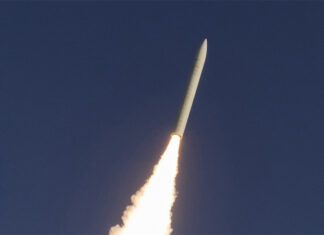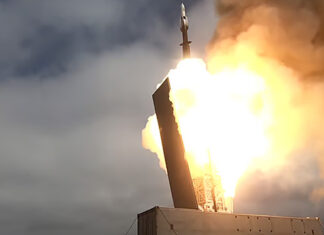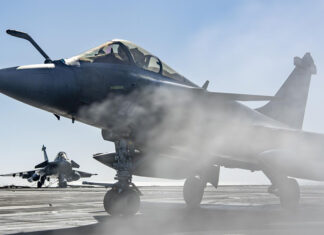The Japan Maritime Self-Defense Force (JMSDF) is set to conduct F-35B Lightning II aircraft tests with the modified helicopter carrier JS Kaga off the coast of San Diego, California, from October 5 to November 18, 2024. This marks a significant milestone in Japan’s efforts to enhance its naval aviation capabilities, as the JS Kaga has been modified to operate F-35B short takeoff and vertical landing aircraft. The tests, supported by U.S. forces, will evaluate the ship’s ability to function as an aircraft carrier, representing a substantial shift in Japan’s maritime defense strategy. This development is part of Japan’s broader initiative to strengthen its defense posture and respond to regional security challenges.
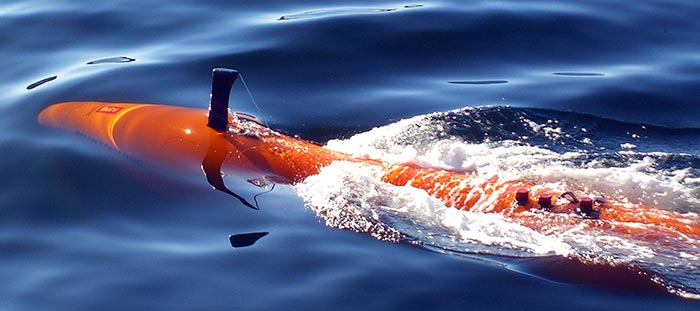 Kongsberg’s AUV Sets Record with 29-Day Autonomous Underwater Mission
Kongsberg’s AUV Sets Record with 29-Day Autonomous Underwater Mission
Kongsberg Maritime’s HUGIN Endurance Autonomous Underwater Vehicle (AUV) has set a new record for the longest autonomous dive, traveling 1,375 kilometers over 29 days without human intervention. The mission occurred between Norway and the UK as part of sea acceptance trials for the Norwegian Defence Research Establishment (FFI). During the dive, the AUV collected high-resolution bathymetry data and water column information, demonstrating improved power consumption and operational reliability. This achievement showcases the potential of AUVs for extended underwater operations in marine research, offshore energy, and defense applications.
 Elbit Systems Boosts Seagull USV with Drones and Loitering Weapons
Elbit Systems Boosts Seagull USV with Drones and Loitering Weapons
Israeli defense firm Elbit Systems has upgraded its Seagull unmanned surface vessel (USV) with drones and loitering weapon systems, enhancing its intelligence gathering and attack capabilities. The fully autonomous 12-meter USV can operate for over four days at sea and is equipped with various weapons, sensors, and countermeasures. Elbit reports high demand for the Seagull, which has been demonstrated to the US Navy’s Fifth and Sixth Fleets, despite some skepticism about USV capabilities in challenging maritime environments.
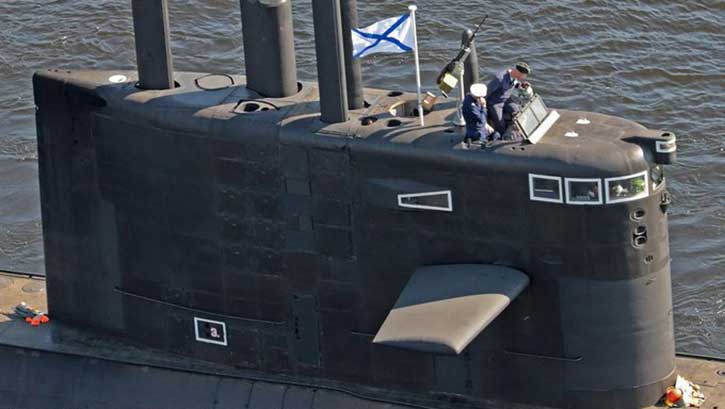 Russia Arms Black Sea Submarines with Machine Guns to Counter Ukrainian Drones
Russia Arms Black Sea Submarines with Machine Guns to Counter Ukrainian Drones
Russian submarines in the Black Sea have been equipped with NSV 12.7mm heavy machine guns on their conning towers, a defensive measure against Ukrainian unmanned surface vessels (USVs). This unusual modification comes in response to successful attacks by Ukrainian naval drones on Russian ships and infrastructure in the region. The adaptation highlights the Russian military’s growing concern about the vulnerability of their naval forces to Ukraine’s innovative use of unmanned systems, underscoring the changing nature of naval warfare. This development reflects ongoing tactical adaptations in the Russia-Ukraine conflict and demonstrates the increasing importance of unmanned systems in modern warfare.
Royal Navy Upgrades Firepower with Advanced 5-inch Gun on HMS Glasgow
The Royal Navy has installed its first Mk45 Mod 4A Medium Calibre Gun on HMS Glasgow, the lead ship of the Type 26 frigates, at BAE’s Scotstoun facility on the Clyde. This 5-inch fully automated gun system, which replaces the existing Mk8 4.5-inch gun, can fire 31.5kg shells at up to three times the speed of sound, engaging various threats, including enemy positions, drones, and fast-moving attack craft. The new system features an automatic handling system, improving safety and efficiency by eliminating manual shell loading. Defence Equipment and Support’s Neil Stevenson praised the gun’s proven effectiveness and incorporation of the latest technologies for multi-mission warships, with the system expected to be the Fleet’s mainstay for the next 50 years.
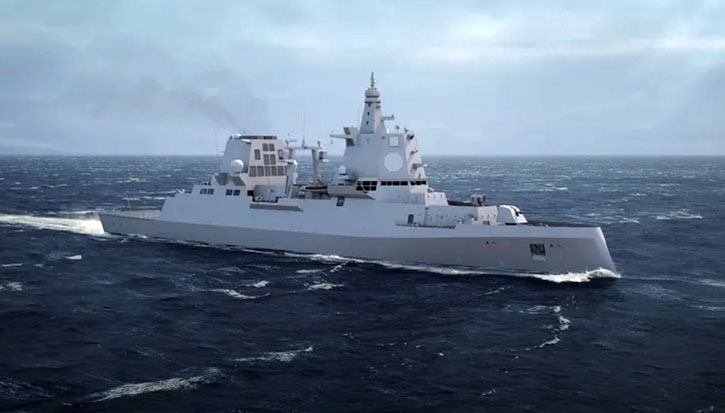 German Shipbuilders NVL and TKMS Partner to Accelerate F126 Frigate Program
German Shipbuilders NVL and TKMS Partner to Accelerate F126 Frigate Program
The German naval shipbuilding industry has taken a significant step forward with the announcement of a strategic partnership between Naval Vessels Lürssen (NVL) and ThyssenKrupp Marine Systems (TKMS) to accelerate the construction of the German Navy’s new F126 frigates. This collaboration addresses delays in the program, which envisions the construction of four advanced frigates with an option for two additional vessels. NVL will remain the primary contractor, while TKMS will contribute its technical expertise and production capabilities. The partnership is expected to streamline the construction process, potentially reducing delays and improving efficiency. This collaboration is seen as crucial for strengthening Germany’s naval shipbuilding industry and enhancing the country’s maritime defense capabilities.
More news coverage in our topical channels includes:





